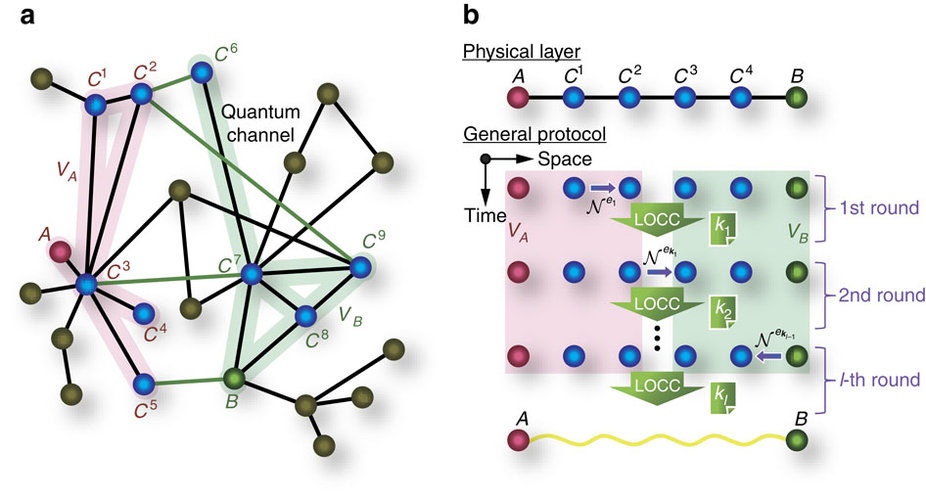量子インターネットの基本的な伝送速度‐伝送損失トレードオフ
Fundamental rate-loss trade-off for the quantum internet
2016年11月25日 Nature Communications 7 : 13523 doi: 10.1038/ncomms13523

量子インターネットは、量子多体系の時間発展のシミュレーションだけでなく、地球上の任意のクライアントへ、量子テレポーテーションや量子鍵配送(QKD)などの量子通信を提供することを約束している。量子インターネットの最も基本的な機能は、互いに光通信路で接続された中間ノードを利用し、2地点間に量子もつれ、あるいは秘密鍵を効率良く提供することにある。ここでは私たちは、任意のネットワークトポロジーに適用可能となるようTakeoka-Guha-Wilde限界を一般化することで、量子インターネットプロトコルに対する基本的な伝送速度‐伝送損失トレードオフを導く。このトレードオフは、都市間QKDや量子中継など、長距離量子通信に不可欠として知られるプロトコルの量子通信効率と、本質的にスケーリングギャップをもたない。量子インターネットに対し、実用的だが一般的な限界を与える私たちの結果は、将来の量子インターネットの潜在能力の理解を可能にする。
Corresponding Author
The quantum internet holds promise for achieving quantum communication—such as quantum teleportation and quantum key distribution (QKD)—freely between any clients all over the globe, as well as for the simulation of the evolution of quantum many-body systems. The most primitive function of the quantum internet is to provide quantum entanglement or a secret key to two points efficiently, by using intermediate nodes connected by optical channels with each other. Here we derive a fundamental rate-loss trade-off for a quantum internet protocol, by generalizing the Takeoka–Guha–Wilde bound to be applicable to any network topology. This trade-off has essentially no scaling gap with the quantum communication efficiencies of protocols known to be indispensable to long-distance quantum communication, such as intercity QKD and quantum repeaters. Our result—putting a practical but general limitation on the quantum internet—enables us to grasp the potential of the future quantum internet.

